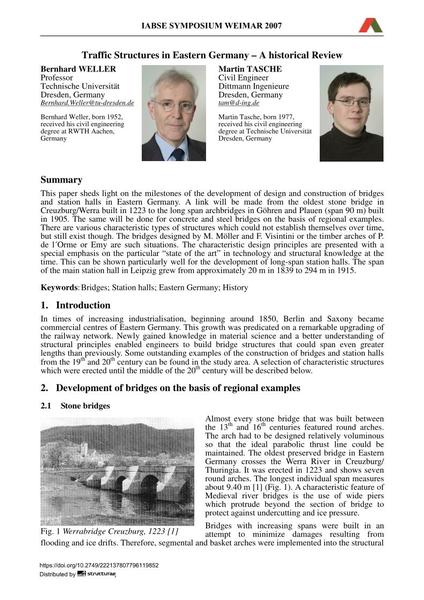Traffic Structures in Eastern Germany – A historical Review

|
|
|||||||||||
Bibliografische Angaben
| Autor(en): |
Bernhard Weller
Martin Tasche |
||||
|---|---|---|---|---|---|
| Medium: | Tagungsbeitrag | ||||
| Sprache(n): | Englisch | ||||
| Tagung: | IABSE Symposium: Improving Infrastructure Worldwide, Weimar, Germany, 19-21 September 2007 | ||||
| Veröffentlicht in: | IABSE Symposium Weimar 2007 | ||||
|
|||||
| Seite(n): | 92-93 | ||||
| Anzahl der Seiten (im PDF): | 8 | ||||
| Jahr: | 2007 | ||||
| DOI: | 10.2749/222137807796119852 | ||||
| Abstrakt: |
This paper sheds light on the milestones of the development of design and construction of bridges and station halls in Eastern Germany. A link will be made from the oldest stone bridge in Creuzburg/Werra built in 1223 to the long span archbridges in Göhren and Plauen (span 90 m) built in 1905. The same will be done for concrete and steel bridges on the basis of regional examples. There are various characteristic types of structures which could not establish themselves over time, but still exist though. The bridges designed by M. Möller and F. Visintini or the timber arches of P. de l´Orme or Emy are such situations. The characteristic design principles are presented with a special emphasis on the particular “state of the art” in technology and structural knowledge at the time. This can be shown particularly well for the development of long-span station halls. The span of the main station hall in Leipzig grew from approximately 20 m in 1839 to 294 m in 1915. |
||||
| Stichwörter: |
Brücken Geschichte
|
||||
